These Are the Best Plants to Keep in Your Bedroom

Breathe some life into your space with these calming and decorative plants.
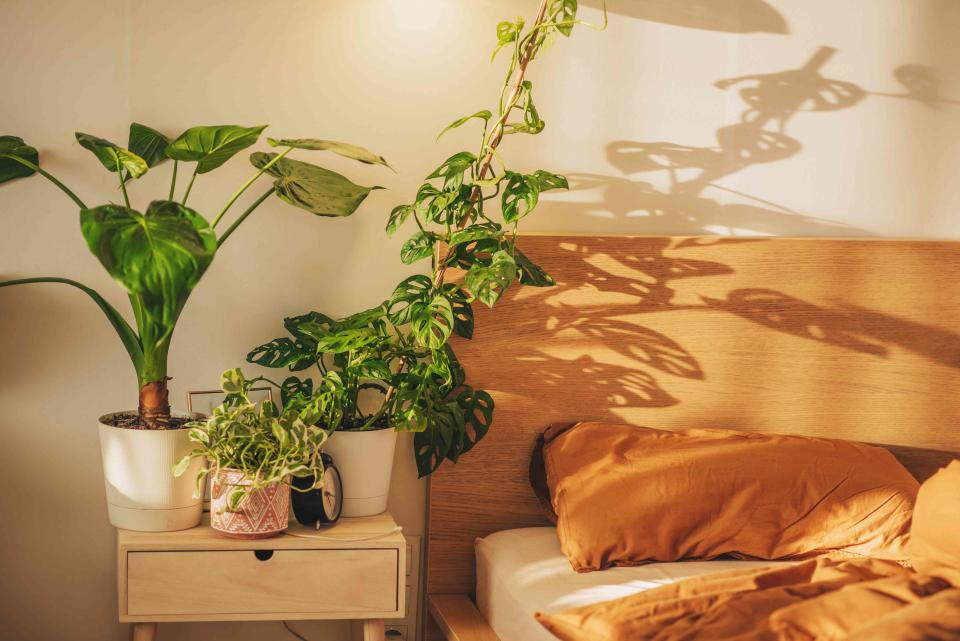
Kseniya Ovchinnikova/Getty Images
Adding greenery to your bedroom can come with a lot of benefits. Not only can plants add more visual interest to your decor, but they can also have calming and uplifting effects on your mood, and (quite literally) breathe more life (oxygen) into your room. However, before you go overboard picking up new plants at your local nursery, its important to learn about the specific care requirements so that you don't end up wasting money or time on plants that won't work for your room or your lifestyle. It's also good to know which plants are generally considered the best plants for bedrooms, based on their ease of care, lighting needs, scent, and even their circadian rhythm habits.
Related: 12 Home Decor Tips for a Mental Health Boost (That Have Nothing to Do With Decluttering)

Kseniya Ovchinnikova/Getty Images
Snake Plant
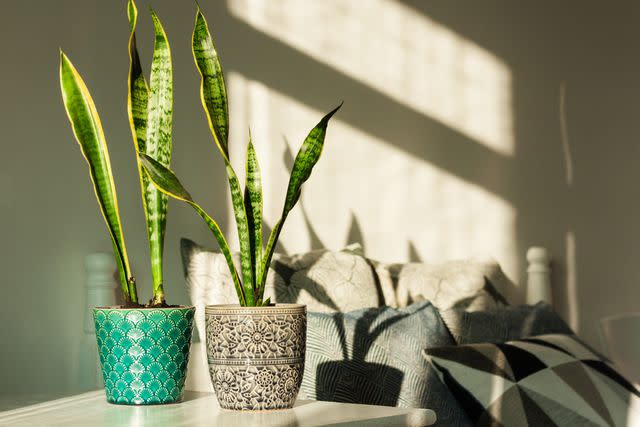
Getty Images/Inna Luzan
Snake plants, a common succulent, are known for being a great plant for beginners, since they're so easy to grow. “Snake plants are very versatile and are suitable for a wide range of lighting, including low, indirect light to afternoon direct sun,” Paris Lalicata, plant expert at The Sill, says. Allow the soil to dry out completely before watering—this could be every one to two weeks in the spring and summer months or even every two to three weeks in the fall and winter.
An added benefit? They convert carbon dioxide into oxygen at night—something that most houseplants only do during the day—which makes them a great companion to have at your bedside.
Calathea
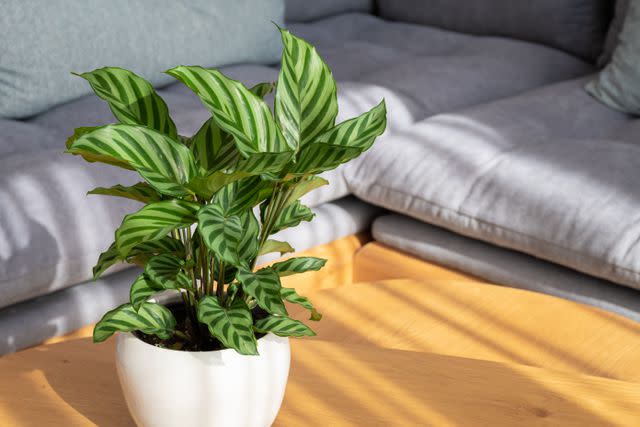
Getty Images/CoinUp
The uniquely patterned, colorful foliage of calathea plants make them a great choice for sprucing up your bedroom decor. Lalicata says this species is also good to keep near your bed because it can signal when it's getting close to bedtime. Calatheas do this through nyctinasty movement, which means they move their leaves up at nighttime and lower them in the daytime in accordance to a circadian rhythm (and in order to maximize light absorption).
Calatheas thrive in medium to bright indirect light, but can tolerate low indirect light. This species is typically moisture loving, so it’s best to water them when about half the soil has dried out. This could be weekly in the spring and summer months or every 10-14 days in the fall and winter depending on environmental conditions.
Philodendron
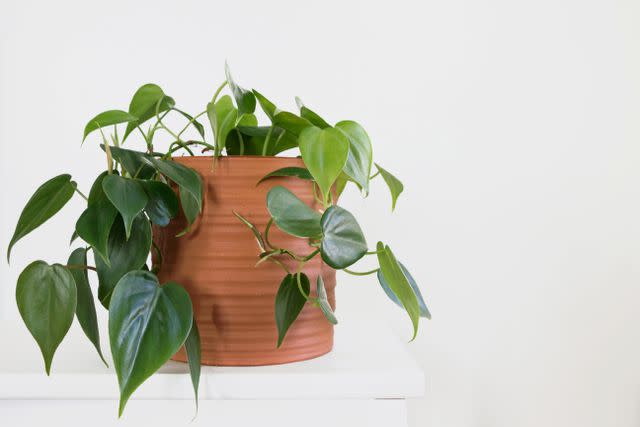
Getty Images/CCeliaPhoto
Philodendrons have beautiful, heart-shaped leaves and quick-growing trailing vines, which can help to make any bedroom look and feel like a lush jungle. Philodendrons will grow faster when exposed to medium-bright indirect light so it’s best to place or hang it near a window.
According to Lalicata, philodendrons prefer to dry out between waterings, which could be every seven to 10 days depending on conditions in the home. They will also physically display when they are ready for water when the leaves start to droop and curl inwards.
Money Tree
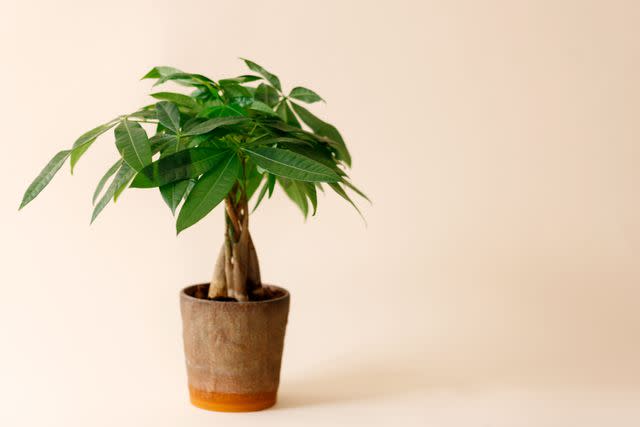
Getty Images/Polina Sergeyeva
The money tree is said to bring good luck and fortune, making it the perfect plant to add to the bedroom to create good Feng Shui. It is known for its resilience, ease of growth, and unique braided trunk. “This plant is not low-light tolerant so it needs sufficient sunlight in order to thrive,” advises Lalicata. “It will do best in medium-bright indirect light with dappled direct sun, and to water the money tree, check the moisture of the soil and only water when the soil has almost or completely dried out.” This could be every seven to 10 days in bright light or every 10-14 days in shadier conditions.
Related: 5 Common Room Layout Mistakes to Avoid, According to Feng Shui
Ficus Tineke
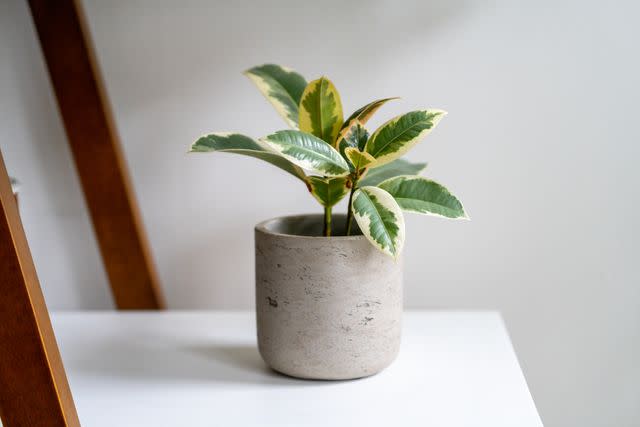
Getty Images/Jenny Sun
This low-maintenance plant has striking pink, green, and yellow leaves that will add color and dimension to any bedroom. “As long as your bedroom provides ample sunlight, this plant will be a colorful addition and can grow well over 5 feet as it matures, eventually making it the perfect statement plant,” says Lalicata. Ficus, like money trees, also don’t tolerate low light, so it'll need bright light in order to thrive, and Lalicata recommends only watering when the soil has almost or completely dried out.
English Ivy
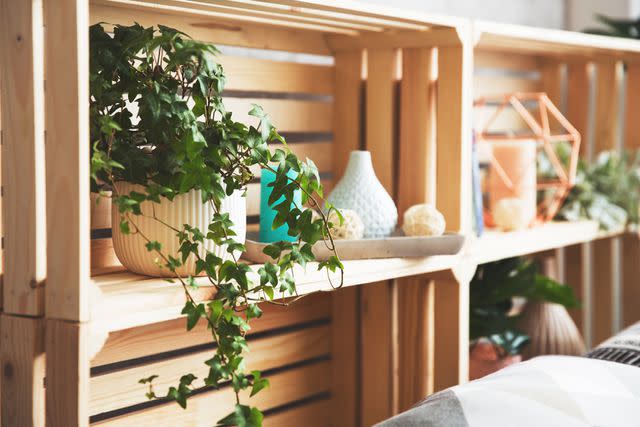
Getty Images/flil
This plant is perfect for hanging baskets and will make an excellent addition to your bedroom. “This fast grower doesn’t need a lot to thrive: Simply plant it in a free-draining soil type, ensure bright indirect light, and water when the top 2 inches of the soil dry out,” Lindsey Hall, botanist and expert contributor at the gardening blog Positive Bloom, says.
Peace Lily
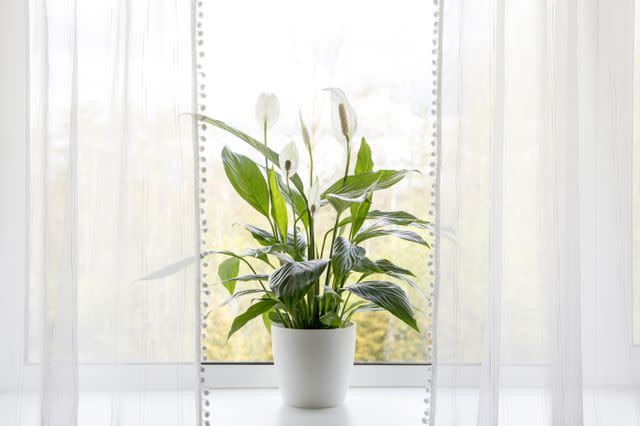
Getty Images/Helin Loik-Tomson
The Peace lily has beautiful leaves and white flowers, making it a lovely and calming addition to any bedroom. Another perk: “They increase indoor humidity, so if you have issues with dry nasal passages, the peace lily is here to help you,” Hall says. Though the peace lily is considered pretty easy to grow, there are some care considerations to keep in mind. “The peace lily is very sensitive to direct sunlight, so keep it in bright but indirect light," Hall adds. "Plant it in a well-draining growing medium, feed monthly during the growing season with diluted all-purpose houseplant fertilizer, and water when the upper part of the soil dries out.”
Spider Plant
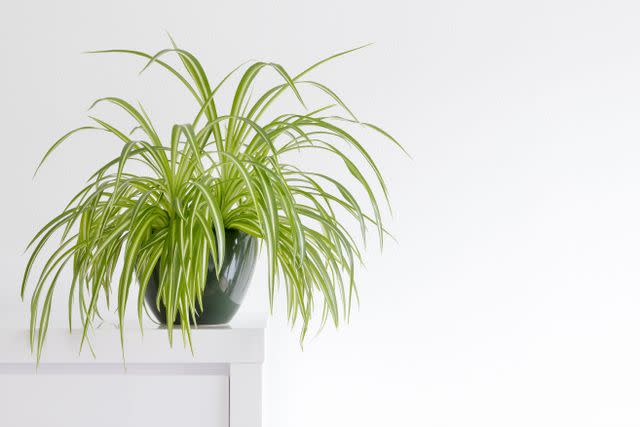
Getty Images/dropStock
Spider plants, like snake plants, release oxygen at night, making them another good bedside companion. They're also quite visually striking, with variegated foliage and long, cascading leaves.
For proper care: “Put your spider plant in low to bright indirect light, make sure the soil is well-draining, and add water when the top 2 inches of the soil dry out,” Hall says.
Gardenia
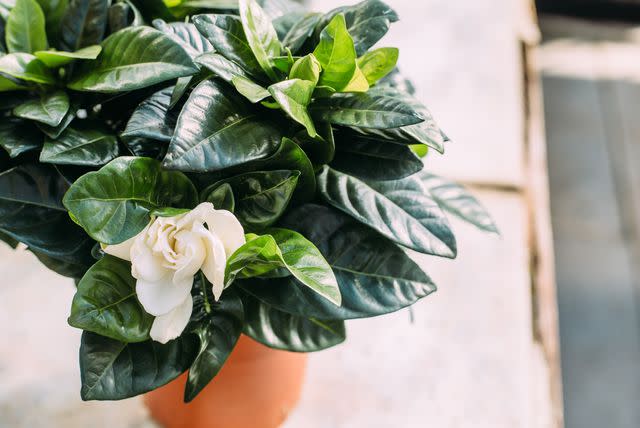
Getty Images/Inna Pankratieva
If you've got somewhat of a green thumb, you can also add a flowering plant with scented blossoms to your bedroom, like gardenia. “Gardenia generates captivating white blossoms, but it isn’t a good choice for beginners because of its high care requirements,” Hall says. “If you like challenges, some of the care requirements include planting it in a free-draining, nutrient-rich, and acidic soil type and keeping it in bright, indirect light with humidity of at least 60 percent.” She also advises fertilizing it twice at the beginning of the growing season and watering weekly when the topsoil dries out.
Jasmine
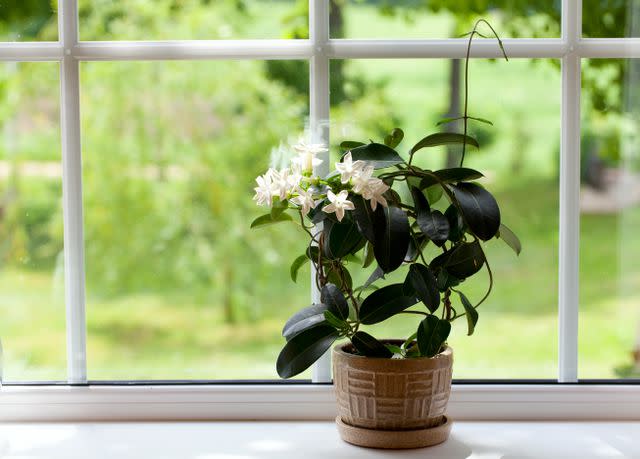
Getty Images/dianazh
If you struggle with anxiety and falling asleep at night, jasmine is an excellent plant for your bedroom as its sweet scent has a calming, stress-reducing effect. Not to mention, the plant itself is a visual treat, too.
“These are water-loving plants, so keep the soil constantly moist, but pay attention not to overwater it,” Hall says. “The ideal spot for jasmine is near a south-facing window. If these locations aren’t available, keep your jasmine on the windowsills of west- or east-facing windows.”
Related: How to Choose a Plant for Every Room in Your House
For more Real Simple news, make sure to sign up for our newsletter!
Read the original article on Real Simple.


